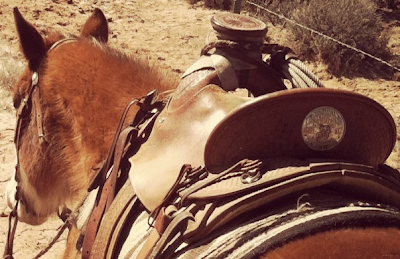By Jamie Keyes
What was once a small family farm in Benson, Utah, Johnson Family
Farms now produces fruits and vegetables for local businesses across Cache Valley.
Brothers Kelby and Braydon Johnson took over operation of the farm in 2006.
They never thought they would expand to where they are now.
“My brother and I realized we need to go in a different
direction then just growing alfalfa,” Kelby Johnson said. “So we have been
dabbling in produce and it just keeps growing and keeps getting bigger and
bigger.”
The brothers began selling their produce at farmers markets
and to roadside stands and then, in 2010, they began selling to Utah State
University Dining Services. Now, they help supply Lee’s Marketplace, Caffé Ibis,
Smith’s Marketplace and Sunshine Terrace.
This summer, the brothers opened up their first roadside
stand. The farm now produces 62 different products ranging from apples to
eggplants.
“We started with 1/10 of an acre and now we have 10 acres,”
Kelby Johnson said. “We grow anything you can grow in Cache Valley, and a few
things you probably shouldn’t be able to grow but we figured out how to do it.”
The brothers have built most of the systems and machines
they use on the farm. They constructed an automated greenhouse where
temperatures can be controlled to grow vegetables such as lettuce and spinach.
It is a full time job for the brothers to maintain and grow the produce.
“We are not certified organic, but what we really try to do use
is common sense, we don’t spray pesticides if we don’t need to,” Kelby Johnson
said. “If we really have a problem that we need to control, we use a specific
application or let nature take its course.”
After the crop has been harvested and taken to the farmers
market, the extra produce is donated to the local food bank.
The Johnson’s realize that most consumers desire organically
grown foods and always keep that in mind when dealing with chemical sprays.
“Last year, we did the math and 96 percent of our crops
weren’t sprayed with anything because they just didn’t need to, it doesn’t make
any sense to spray something that doesn’t need it,” Kelby Johnson said. “It’s
not what the consumer wants and why put things out there that don’t need to be
out there.”
The Johnson’s farm land has been in the family for four
generations. For Kelby, who is 27, and Braydon, 22, farming and gardening has
not been a career choice, but a way of life.
“As long as I can remember I have wanted to farm,” Braydon
Johnson said. “It started really young for both us, and we just haven’t slowed
down at all.”
Kelby Johnson graduated from USU with a degree in agronomy
and Braydon is now working toward the same degree with a minor in agriculture
business.
The brothers are always looking for new methods to improve
their produce. During the winter months they spend their time getting certified
in different farming skills, ordering seed, and making deliveries three times a
week to clients.
“Great-grandpa had a
great big garden, grandpa had a great big garden, Dad has a big garden and now
ours is just a really big garden,” Kelby Johnson said. “We are doing what we
have done for our family for the last 100 years, but now for everybody else.”






